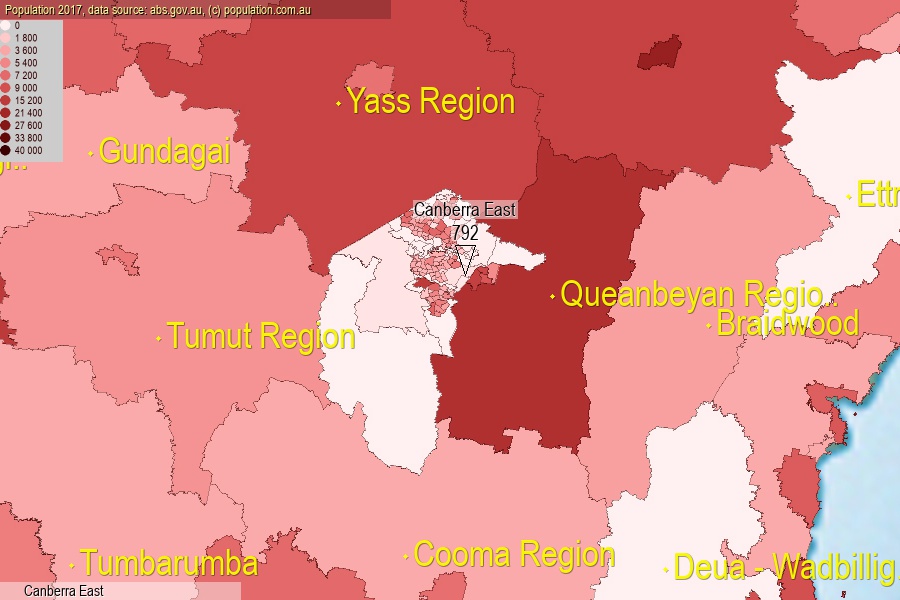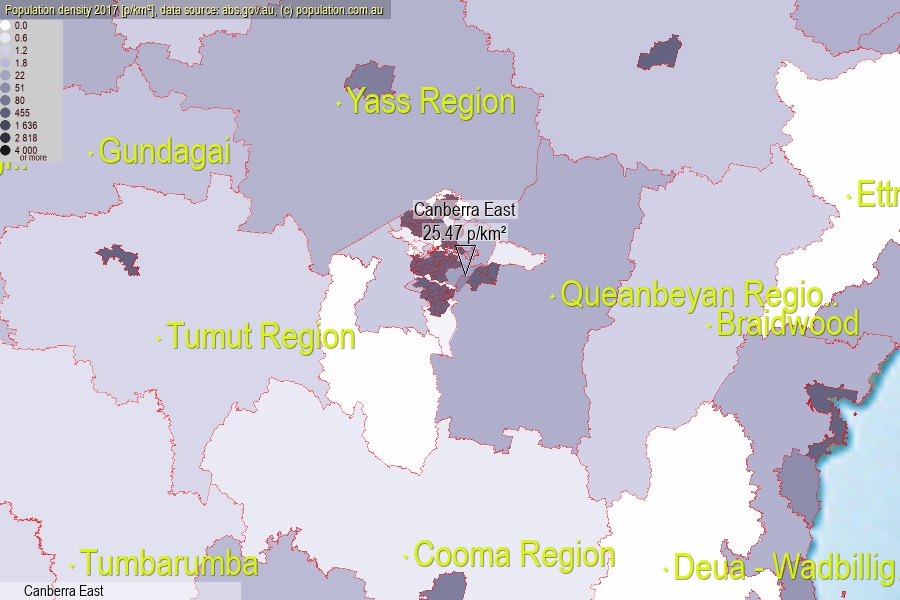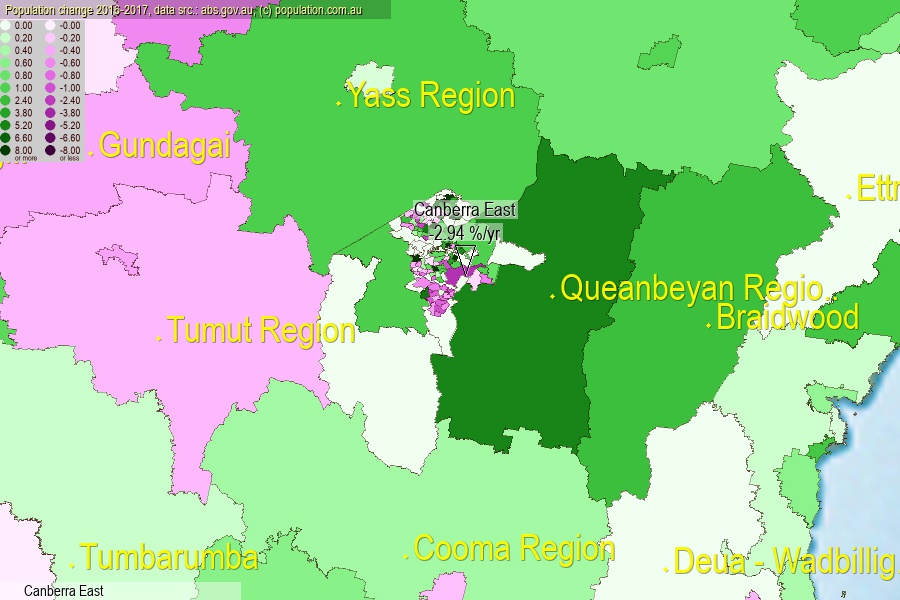 population.com.au
population.com.auLast official estimated population of Canberra East (as Statistical Area Level 2) was 792 people (on 2017-06-30)[2]. This was 0.00% of total Australian population and 0.189% of ACT population. Area of Canberra East is 31.10 km², in this year population density was 25.47 p/km² . If population growth rate would be same as in period 2016-2017 (-2.94%/yr), Canberra East population in 2025 would be 624. [0]



Click to enlarge. Canberra East is located in the center of the images.
Population [people], population density [p./km²] and population change [%/year] [2]
View borders » (new window) [4]
[2001-2002] -1.23 %/Yr.
[2002-2003] -1.77 %/Yr.
[2003-2004] -0.95 %/Yr.
[2004-2005] -4.06 %/Yr.
[2005-2006] -4.79 %/Yr.
[2006-2007] +0.23 %/Yr.
[2007-2008] +0.93 %/Yr.
[2008-2009] +1.04 %/Yr.
[2009-2010] +1.03 %/Yr.
[2010-2011] +1.25 %/Yr.
[2011-2012] -2.13 %/Yr.
[2012-2013] -3.09 %/Yr.
[2013-2014] -2.72 %/Yr.
[2014-2015] -1.33 %/Yr.
[2015-2016] +0.37 %/Yr.
[2016-2017] -2.94 %/Yr.
[0] Calculated with linear interpolation from officially estimated population
[1] Read more about SA2 and Australian Statistical Geography Standard (ASGS) on abs.gov.au
[2] Population data from Australian Bureau of Statistics (Population and density: 2017; change: 2016-2017)
[3] Digital Boundaries: Australian Statistical Geography Standard (ASGS) 2016.
[4] Border coordinates are simplifyed using Ramer-Douglas-Peucker algorithm.